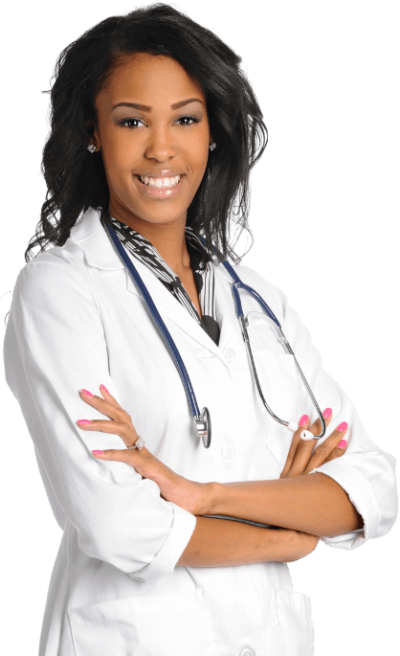What is Hypertension?
High blood pressure, also known as hypertension, is a common condition that occurs when the force of blood against the artery walls is consistently too high. It is a major risk factor for heart disease, stroke, kidney disease, and other serious health problems.
Blood pressure ranges can vary depending on a person’s age, sex, and other factors, and it is important to understand what is considered normal for an individual. The following ranges are generally accepted by the American Heart Association and the Centers for Disease Control and Prevention:
Low blood pressure (hypotension): Systolic: 90 mm Hg or lower Diastolic: 60 mm Hg or lower
Normal blood pressure (optimal): Systolic: 90-119 mm Hg Diastolic: 60-79 mm Hg
High blood pressure (hypertension): Systolic: 120 mm Hg or higher Diastolic: 80 mm Hg or higher
Hypertensive crisis: Systolic: 180 mm Hg or higher Diastolic: 120 mm Hg or higher

It is important to note that these ranges are general guidelines, and that blood pressure can vary from person to person. It is always important to discuss individual blood pressure goals and ranges with a healthcare provider. By understanding blood pressure ranges, individuals can better manage their blood pressure and reduce the risk of serious health problems.
Maintaining a normal blood pressure range is crucial for overall health and well-being. High blood pressure can damage the arteries and increase the risk of serious health issues, while consistently low blood pressure can also cause problems such as dizziness and fainting. By keeping blood pressure within a healthy range, individuals can greatly reduce their risk of developing these and other health issues.
In this article, we will explore effective ways to reduce and maintain normal blood pressure. We will discuss lifestyle changes, medications, and additional tips for managing blood pressure and maintaining good overall health.
Lifestyle Changes
Lifestyle changes are an important part of managing blood pressure and maintaining a healthy range. There are several areas of daily life that can impact blood pressure and making changes in these areas can help reduce blood pressure to a normal range.
Diet is a significant factor in managing blood pressure. It is important to focus on reducing sodium intake, as high levels of sodium can contribute to high blood pressure. Increasing fruit and vegetable consumption can also help lower blood pressure, as these foods are high in nutrients and fiber and low in sodium.
The DASH diet (Dietary Approaches to Stop Hypertension) is a dietary pattern that has been shown to be effective in lowering blood pressure and reducing the risk of serious health problems such as heart disease and stroke. The DASH diet emphasizes a variety of nutrients and is rich in fruits, vegetables, whole grains, and low-fat dairy products. It also includes lean protein sources such as poultry, fish, and beans and limits the intake of saturated fat, cholesterol, and added sugars.
One of the key features of the DASH diet is its emphasis on reducing sodium intake. High levels of sodium can contribute to high blood pressure, and the DASH diet recommends limiting sodium intake to less than 2,300 milligrams per day. The DASH diet also recommends getting at least four to five servings of fruits and four to five servings of vegetables per day, as well as six to eight servings of grains, four to five servings of dairy products, and two to three servings of lean protein sources.
The DASH diet has been shown to be effective in lowering blood pressure in both short-term and long-term studies. It is generally considered a safe and healthy dietary pattern that can be followed by individuals of all ages.
By following the DASH diet and reducing sodium intake, individuals can effectively lower blood pressure and reduce the risk of serious health problems. It is always important to work with a healthcare provider or a registered dietitian to determine the most appropriate dietary pattern for individual needs and goals.
Limiting alcohol intake can also help manage blood pressure, as excessive alcohol consumption can raise blood pressure levels.
Exercise is another important aspect of managing blood pressure. Regular physical activity can help lower blood pressure and maintain a healthy range. It is recommended to aim for at least 150 minutes of moderate-intensity exercise per week, such as brisk walking or cycling.
Smoking is a major risk factor for high blood pressure and other serious health problems, and quitting smoking can help lower blood pressure and reduce the risk of these issues.
When an individual smokes, the chemicals in cigarette smoke constrict the blood vessels and increase the force of blood against the artery walls, which can lead to high blood pressure. Quitting smoking can help lower blood pressure and reduce the risk of serious health problems such as heart disease, stroke, and lung cancer.
There are several strategies that can be helpful in quitting smoking. Some individuals may find it helpful to set a quit date and create a plan for managing cravings and triggers. Others may find it helpful to use nicotine replacement therapy or prescription medications to manage withdrawal symptoms. It can also be helpful to seek support from friends, family, or a support group, as quitting smoking is often easier with the help of others.
By quitting smoking, individuals can significantly lower their blood pressure and reduce the risk of serious health problems. It is never too late to quit smoking and the benefits of quitting smoking are numerous and significant.
Stress management is another important aspect of maintaining healthy blood pressure. Techniques such as meditation, yoga, and deep breathing can help reduce stress and promote relaxation, which can in turn help lower blood pressure. It is important to find ways to manage stress and maintain a sense of balance and well-being.
By incorporating these lifestyle changes into daily life, individuals can effectively manage blood pressure and reduce it to a normal range.
Medications
Medications can be an effective way to lower blood pressure and maintain a healthy range. There are several types of medications available to treat high blood pressure, and the most appropriate treatment plan will depend on an individual’s specific needs and medical history.
Some common types of medications used to lower blood pressure include angiotensin-converting enzyme (ACE) inhibitors, angiotensin receptor blockers (ARBs), calcium channel blockers, beta-blockers, and diuretics. These medications work by relaxing the blood vessels and reducing the force of blood against the artery walls.
It is important to follow the prescribed treatment plan and take medications as directed by a healthcare provider. It is also important to regularly monitor blood pressure at home using a digital blood pressure monitor to ensure that the treatment plan is effective and to make any necessary adjustments.
By following the prescribed treatment plan and regularly monitoring blood pressure, individuals can effectively lower blood pressure to a normal range and reduce the risk of serious health problems.
African Americans may be at higher risk of adverse reactions to certain blood pressure medications. It is important for individuals, particularly African Americans, to be aware of the signs and symptoms of adverse reactions and to discuss any concerns with a healthcare provider.
One class of blood pressure medications that may be more likely to cause adverse reactions in African Americans is angiotensin-converting enzyme (ACE) inhibitors. These medications work by blocking the production of a substance that narrows the blood vessels, which helps to lower blood pressure. African Americans may be more likely to experience adverse reactions such as coughing and angioedema (swelling of the face, lips, tongue, or throat) when taking ACE inhibitors.
Another class of blood pressure medications that may be more likely to cause adverse reactions in African Americans is angiotensin receptor blockers (ARBs). These medications work by blocking the action of a substance that narrows the blood vessels, which helps to lower blood pressure. African Americans may be more likely to experience adverse reactions such as kidney problems and allergic reactions when taking ARBs.
It is important to be aware of the signs and symptoms of adverse reactions to blood pressure medications and to consult with a healthcare provider if any concerns arise. By being informed and working closely with a healthcare provider, individuals can effectively manage blood pressure and reduce the risk of adverse reactions.
Blood pressure medications can help lower blood pressure and reduce the risk of serious health problems, but they can also cause side effects. It is important to be aware of the potential side effects of blood pressure medications and to discuss any concerns with a healthcare provider.
Blood pressure medications can affect several major body systems. For example, some medications can cause dizziness or lightheadedness, which can increase the risk of falls. Others can cause dry mouth, constipation, or diarrhea. Some medications may also affect the liver or kidneys and may need to be used with caution in individuals with liver or kidney problems.
Blood pressure medications can also have effects on male reproductive organs and sexual performance. Some medications may cause erectile dysfunction or reduce libido. Others may affect sperm count or motility. You should discuss any concerns about sexual side effects with your healthcare provider, as there may be alternative treatment options available.
It is important to be aware of the potential side effects of blood pressure medications and to discuss any concerns with a healthcare provider. By working closely with your healthcare provider, you can effectively manage blood pressure and minimize the risk of side effects.
Herbal Treatments
Herbal treatments are a type of alternative medicine that can be used to manage a variety of health conditions, including high blood pressure. Some common herbs that are used to lower blood pressure include garlic, hawthorn, and hibiscus.
Garlic is a popular herb used to lower blood pressure. It contains compounds that help relax the blood vessels and reduce the force of blood against the artery walls. It can be consumed raw, cooked, or in supplement form.
Hawthorn is another herb that has been shown to lower blood pressure. It is believed to work by relaxing the blood vessels and improving blood flow. It can be taken as a supplement or consumed in the form of tea.
Hibiscus is a type of flower that has been shown to have blood pressure-lowering effects. It can be consumed as a tea or in supplement form.
Hawthorn, hibiscus, and garlic are three natural substances that have been suggested to have blood pressure-lowering effects. They are often available as standalone supplements or in combination products. While these substances may have potential benefits for managing blood pressure, it is important to note that the use of these substances as treatments for high blood pressure is not well-established and more research is needed to understand their potential benefits and risks. It is always important to consult with a healthcare provider before using any new treatment, including natural substances, to manage blood pressure.
K2 and olive leaf extract are two natural substances that have been suggested to have blood pressure-lowering effects.
K2, also known as menaquinone, is a type of vitamin K found in some foods. It has been suggested to have blood pressure-lowering effects, but more research is needed to confirm its effectiveness and understand its mechanisms of action.
Olive leaf extract is a substance derived from the leaves of the olive tree. Olive leaf extract has been suggested to have a range of health benefits in addition to blood pressure-lowering effects.
By considering the potential benefits and risks of K2 and olive leaf extract and consulting with a healthcare provider, individuals may be able to safely incorporate these natural substances into a treatment plan for managing blood pressure.
It is important to note that herbal treatments can interact with medications and may not be suitable for everyone, so consult with a healthcare provider before starting any new treatment, including herbal treatments, to ensure safety and effectiveness.
By considering these and other herbal treatments, individuals may be able to lower their blood pressure and maintain a healthy range. You should work with a healthcare provider to determine the most appropriate treatment plan.
Additional Tips
There are several additional tips that can help individuals manage blood pressure and maintain a healthy range.
Regular check-ups with a healthcare provider are an important part of managing blood pressure. These checkups provide an opportunity to monitor blood pressure and assess the effectiveness of treatment plans. It is generally recommended to have blood pressure checked at least once a year, or more frequently if recommended by a healthcare provider.
Monitoring blood pressure at home using a digital blood pressure monitor can also be helpful in managing blood pressure. These devices allow individuals to track their blood pressure on a regular basis and provide a record for healthcare providers to review. This can help identify any patterns or changes in blood pressure and allow for timely adjustments to treatment plans.


Working with a healthcare provider to determine the most effective treatment plan is also crucial in managing blood pressure. This may involve a combination of lifestyle changes, medications, or other treatments, and it is important to follow the recommended plan and make any necessary adjustments as directed by a healthcare provider.
By following these additional tips and working closely with a healthcare provider, individuals can effectively manage blood pressure and maintain a healthy range.
In conclusion, maintaining a normal blood pressure range is crucial for overall health and well-being. High blood pressure can damage the arteries and increase the risk of serious health issues, while consistently low blood pressure can also cause problems such as dizziness and fainting. By keeping blood pressure within a healthy range, individuals can greatly reduce their risk of developing these and other health issues.
graph LR A((What is Hypertension?)) B(High blood pressure.) C(occurs when<br> the force<br> of blood against the_<br> artery walls is<br> consistently too high_) D(major risk factor_ <br>for <br>heart disease, <br>stroke,<br> kidney disease, <br>and other serious_<br> health problems.) A -- B --> C A -- B --> D
Lifestyle changes and medications can be effective in helping to reduce blood pressure to a normal range. Making changes to diet, increasing physical activity, smoking cessation, and managing stress can all help lower blood pressure. Medications can also be an effective way to lower blood pressure and maintain a healthy range. Additionally, herbal treatments can be used as an alternative to lower blood pressure. It is important to follow the prescribed treatment plan and make any necessary adjustments as directed by a healthcare provider.
By following a treatment plan and making lifestyle changes, individuals can effectively manage blood pressure and reduce the risk of serious health problems. Maintaining a normal blood pressure range is an important part of maintaining good overall health and well-being.
Nurse Resource Team






